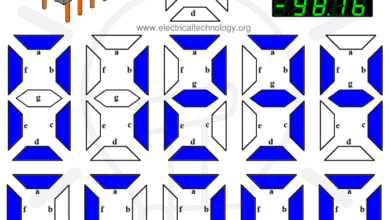Digital Electronics
-

Difference Between Synchronous and Asynchronous Transmission
Key Difference Between Synchronous and Asynchronous Transmission The digital communication is classified into parallel and serial transmission of data and a brief article about their differences has been previously discussed…
Read More » -

Difference Between Serial and Parallel Communication
Key Difference Between Serial and Parallel Communication In our daily life, we share and receive information (signs, verbal, written) from each other. The devices we use (and their internal components)…
Read More » -

Difference Between 8085 & 8086 Microprocessor – Comparison
Key Difference Between 8085 and 8086 Microprocessor The 8085 and 8086 are both different versions of microprocessors produced by Intel in the ’70s. They are the most common available microprocessors.…
Read More » -

Difference Between CPU and GPU – Comparison
Key Difference Between CPU and GPU The CPU (Central Processing Unit) & GPU (Graphics Processing Unit) have multiple common features such as they are both processors made from millions of…
Read More » -

Difference Between RAM and ROM – Comparison
Difference Between RAM (Read Only Memory) and ROM (Read Only Memory The memory is the essential component or circuit of any electronic device that needs to store information. The information…
Read More » -

Difference between Analog and Digital Circuit – Digital vs Analog
What is the Difference between Analog and Digital Circuit In our daily life, we use multiple electrical and electronics devices that interact with each other and the real-world through the…
Read More » -

What is Piezoelectric Sensor – Construction, Working & Applications
Piezoelectric Sensors, Construction, Working and Applications Piezoelectric Effect Piezo is a Greek term signifying “press” or “squeeze”. Piezoelectricity (also called the piezoelectric effect) is the presence of an electrical potential across…
Read More » -

Seven Segment Display: 7-Segment Display Types, Working & Applications
7-Segment Display: Seven-Segment Display Types, Working & Applications In our daily life we come across many displays like television, smartphones, computers, traffic lights time counters, digital watches, washing machine, etc.…
Read More » -

What is RS232 Serial Communication Protocol and How it Works?
RS232 Serial Communication Protocol: Working, Specifications & Applications What is RS232? RS232 is one of the standard protocol in telecommunication which is used for serial communication of data. It is basically…
Read More » -

Push-Pull Amplifier Circuit – Class A, B & AB Amplifier Circuits
Push-Pull Amplifier Circuits using Transistors A Push-Pull transistor circuit is an electronic circuit that uses active devices connected in a particular way that alternatively supply current and absorb from connected load…
Read More »